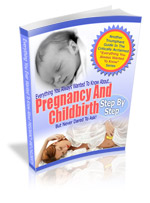Welcome to Pregnancy Guide
After Abortion Article
 . For a permanent link to this article, or to bookmark it for further reading, click here.
. For a permanent link to this article, or to bookmark it for further reading, click here.
You may also listen to this article by using the following controls.
What Is Abortion, Anyway?
from:Abortion is typically defined as the discharge or removal of an embryo or fetus from the woman’s body. This can be involuntary, such as in Spontaneous Abortions. A voluntary abortion, or Induced Abortion, is subcategorized into two separate types: Therapeutic Abortion and Elective Abortion. Induced Abortion can be a choice made by the woman because she does not wish to be pregnant, or because the pregnancy endangers her health or mental well-being.
When asking “what is abortion?” it is important to specify what type of abortion you want to discuss. Spontaneous Abortion, or miscarriage, happens naturally as the body’s way of getting rid of something unhealthy for the expectant mother. Sometimes this will happen because of genetic problems or malformations of the fetus. Therapeutic Abortion is usually recommended by a doctor in cases of pregnancy that will harm the expectant mother. Induced Elective Abortion is a choice that is made for personal reasons. The woman may feel she is mentally or emotionally unfit to be a mother, or she may not be able to support a child in another way.
The question “What is Abortion” extends to the different types of abortion procedures as well. There are surgical, chemical and herbal abortions available, though herbal abortions are not very reliable, nor are they very safe. Generally, herbal abortions are not used in modern times. Surgical abortions are the most common and most widely-known. During the first trimester of pregnancy, abortion can be done by Manual Vacuum Aspiration (MVA), Electric Vacuum Aspiration (EVA), or Dilation and Curettage. MVA and EVA use suction to remove the embryo; MVA uses a syringe to remove the tissue, and EVA uses pump. Dilation and Curettage requires the opening of the cervix, and then the insertion of a sharp curette to scrape the uterine walls. Later on, abortion can be done by Dilation and Evacuation, Intact Dilation and Extraction (also called Partial birth Abortion), and by Hysterectomy. Dilation and Evacuation uses instruments and suction to remove the tissue after the cervix has been dilated. Intact Dilation and Extraction involves a medical process where the fetal brain matter is removed so the head collapses to make it easier to remove the fetus. A Hysterectomy Abortion is basically a cesarian section procedure.
Chemical abortions involve the combination of drugs to result in the termination of the pregnancy and generally what is abortion. The use of methotrexate or mifepristone is combined with either misoprostol – commonly used in the US - or gemeprost – commonly used in the UK and Sweden. Most people do not get this information when they ask “what is abortion”.
“What is abortion” also applies to the law. Most Western countries have legalized early-term abortions in the first trimester. The Partial Birth Abortion Ban in the United States prevents the use of Intact Dilation and Extraction in later-term pregnancies, although this law is currently before the US Supreme Court because it does not provide for the health of the mother in Therapeutic Abortion cases.

